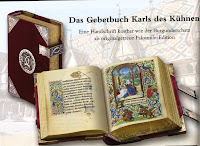
A few days ago Taschen asked on his blog about what type of thread to use to achieve a period look (He is working on medieval German reproductions). There is some information out there about using spun silk vs filament silk, but I wanted to see a side by side comparison. So here is a little sampler of the threads currently in my embroidery box on 28 count linen. I included cotton and wool threads for comparison purposes and because I had them. I really want to try the Devere silk and now that they have a decent website I plan to order some.
What are your favorites and how do they compare?
Soie Ovale untwisted filament silk, I bought this to try it so I only have the one color. It is nice and flat, even with the two strands I had to use to get good coverage on the linen.
Soie Alger is spun and plied silk with 7 2-ply strands twisted together. Even when the strands are separated the twist is evident. It has a nice sheen and comes in lots of colors and is easier to find than Soie Ovale. I used the same color of Soie Alger and Soie Ovale but there is a distinct difference in the look and sheen. This is one of my favorites because the multiple strands are easy to serarate for different counts of linen, it works nicely, and is available at my local store. A single strand is good for blackwork.
Aurorasilk is 20/2 spun silk with a loose twist. This is my current favorite embroidery thread. It is available dyed with natural dyes or in cones of undyed thread. A friend of mine dyes this silk and gave me a bunch so I have limited amounts and colors. To me it looks similar to some period embroideries. It is nice to work with and because it is thicker I only have to use one or two strands which makes it easier to keep the thread flat. Naturally dyed colors give a wonderful period feel.
Trebizond is a tightly twisted spun silk that I included in the sampler because I have it although I would never embroider with it. It is very difficult to keep the twist even; it untwists or twists more tightly while working which is noticeable in the finished work. It has a lovely sheen, comes in a nice range of colors and works well for kumihimo (that's what I use it for).
Splendor is spun silk popular with embroiderers but I personally hate it. I've had problems with fraying, my blackwork looked fuzzy, and the 12 strands are a pain to separate. I used most of mine in kumihimo experiments just to get rid of it. Soie Alger is similar but much easier to work with. Maybe someone else can give a less biased opinion.
DMC #5 Cotton Perle is included for comparison purposes.
Medici wool is a very fine wool by DMC that was discontinued this year. It is finer than crewel wook and good for fine embroidery but even on 28 count linen I had to use two strands.
Paternayan tapestry wool is thicker than crewel wool. Comes in many colors but many of them do not look like naturally dyed colors.





















































